Did you know that improper tree trimming is one of the top causes of declining urban tree health across North America? When done right, tree trimming can breathe new life into your landscape, supercharge plant health, and keep your home safe from hazards. Whether you’re a homeowner eyeing your overgrown maple or a property manager tasked with landscape maintenance, understanding effective tree care practices is key to thriving greenery. This guide uncovers industry secrets, offers step-by-step instructions, and even addresses legal implications—empowering you to turn every pruning and trimming session into a growth opportunity for your trees and shrubs.
Surprising Insights into Tree Trimming: Why Proper Tree Care Matters
Tree trimming is far more than an aesthetic fix—it's a critical practice for sustaining robust tree health and landscape longevity. Many homeowners and businesses don’t realize that overgrown or improperly trimmed trees and shrubs can suffer from disease, structural weakness, and even premature death. Proper tree care can help prevent storm damage, enhance curb appeal, and improve safety for your property and community. For example, routine tree trimming ensures sunlight and air circulation reach all parts of the canopy, which is vital for photosynthesis and long-term plant health.
Certified arborists emphasize the importance of strategically trimming tree branches to focus on removing dead, diseased, or overlapping limbs. Unlike basic hedge trimming, skilled tree pruning and trimming address specific biological needs of the tree, promoting balanced growth and resilience. The difference between a pruned tree and a neglected one often comes down to the experience and techniques applied—making tree care a specialized skillset crucial for thriving landscapes.
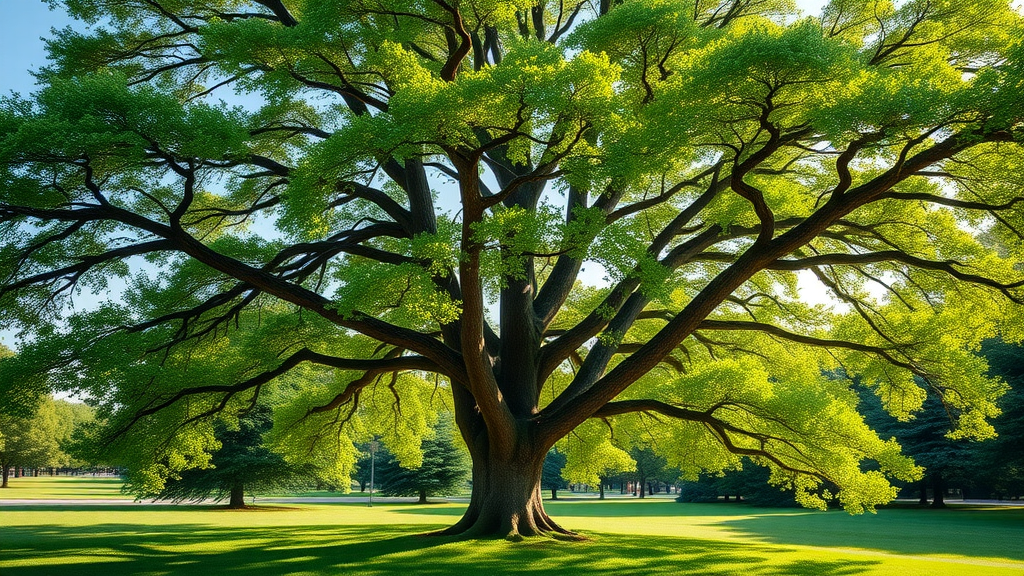
- The science behind tree trimming and how it impacts tree health
- The differences between pruning and trimming
- When and how to trim for maximum effect
- Key tips from certified arborists
- Seasonal and legal considerations in tree trimming
"According to the International Society of Arboriculture, improper tree pruning is one of the leading causes of declining urban tree health in North America."
Mastering Tree Trimming: Essential Techniques for Optimal Tree Health
How Tree Trimming Promotes Healthy Growth for Trees and Shrubs
Tree trimming acts as preventive healthcare for your landscape, focusing on removing dead, diseased, or damaged branches before they compromise the health of the tree or its surroundings. This targeted intervention enhances air flow and light penetration, which are fundamental for robust tree health and thriving plants. Healthy trees and shrubs also bolster local ecosystems by providing cleaner air, stabilizing the soil, and offering vital habitats.
Furthermore, routine tree care aligns with horticultural best practices, such as directional pruning and removing dead wood , to ensure that growth patterns do not threaten structures, block sunlight, or encourage pests. For instance, certified arborists can identify specific weight imbalances or overly dense canopies—both risk factors for falling branches in severe weather. As a result, intentional and regular tree trimming not only prevents hazards but cultivates lush, vibrant landscapes that boost property value and neighborhood aesthetics.
For those interested in hands-on maintenance, exploring a beginner's guide to DIY tree pruning can provide practical tips and safety advice, making it easier to approach basic trimming tasks with confidence and care.
Finally, proper trimming also encourages the development of strong core limbs and a visually appealing tree shape. This is especially important for young trees, as formative pruning and trimming can set the trajectory for their healthy, controlled growth for decades to come.

Tree Trimming vs. Tree Pruning: Understanding the Differences
Although often used interchangeably, tree trimming and tree pruning have distinct purposes and approaches. Tree trimming generally emphasizes managing the tree’s appearance by cutting back excess growth or maintaining its shape, especially in urban landscapes where aesthetics and clearance are key. This method typically targets younger, faster-growing branches and is best performed during the active growing season or when the tree is dormant.
Conversely, tree pruning focuses on removing damaged, diseased, or structurally unsound limbs to improve plant health and longevity. Pruning trees often requires more precise cuts and a deeper understanding of tree biology, as it impacts health, flowering, and fruiting potential. Certified arborists may recommend pruning in late winter to early spring, when trees are dormant and less susceptible to stress or disease—a time when their branch structure is also easier to evaluate.
In summary, while both practices enhance tree health and safety, knowing which to use and when ensures trees and shrubs reach their full, vibrant potential, free from risk and disease.
| Technique | Purpose | Timing | Professionals |
|---|---|---|---|
| Tree Trimming | Control shape, remove overgrowth | Growing season or dormant | Certified arborists |
| Tree Pruning | Remove diseased/damaged branches, support plant health | Late winter to early spring | Certified arborists |
When to Trim Trees: Best Months and Seasonal Timing
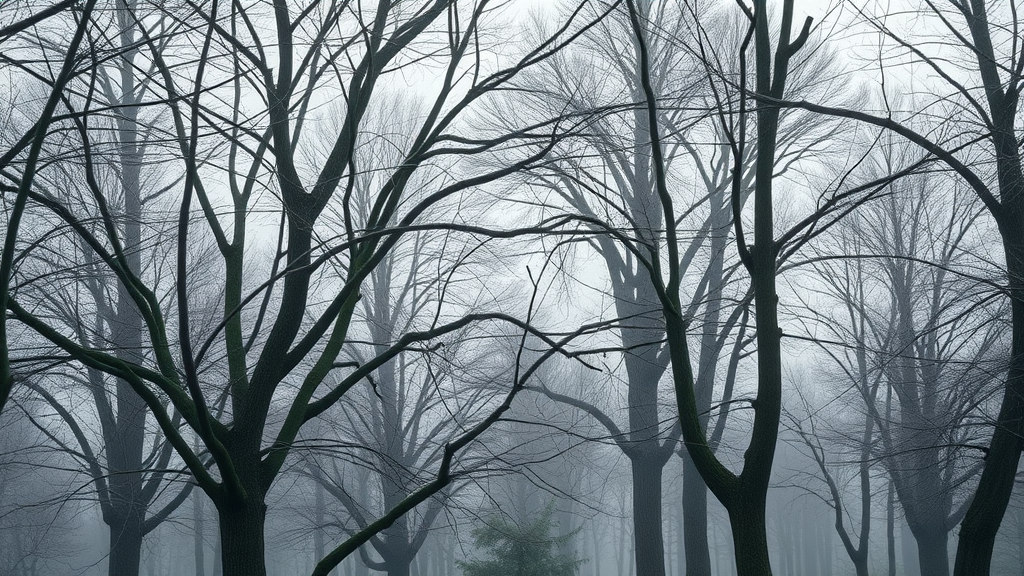
One of the most common questions about tree trimming involves the timing. When is the right time to trim a tree for maximum effect? The answer varies, but generally, late winter through early spring is the optimal window for most species. During this dormant period, trees and shrubs heal more quickly, and cuts are less likely to invite pests or disease. Arborists recommend inspecting the canopy in late winter, when bare branches are easier to assess for issues such as cross-growth, damaged limbs, or dead wood.
Seasonal timing also impacts how well trees respond to pruning and trimming. While some species, especially flowering trees, may benefit from selective trims post-bloom, most landscape trees are healthiest when pruned during dormancy. This practice not only encourages vigorous spring growth but minimizes sap loss and shock. Planning your landscape maintenance calendar with tree health in mind leads to better results and longer-lived, more reliable shade, privacy, and beauty in your outdoor spaces.
It’s also crucial to consider regional variations. For example, in many parts of North America, severe pruning during the heart of summer can cause undue stress, whereas milder climates might allow for a wider trimming window. Consulting with certified arborists ensures your tree care routine is seasonally sound.
Optimal Times for Trimming Trees to Enhance Plant Health
Strategic trimming and pruning directly influence plant health . By timing interventions to coincide with dormancy, you reduce the risk of infecting trees with harmful pathogens and encourage swift, vigorous healing. Late winter to early spring—when buds haven’t yet broken—remains the golden standard for the majority of shade, ornamental, and fruiting trees in North America.
However, certain trees, such as maples or birches, may bleed sap if pruned too early in the season but recover well once leaves have formed. Meanwhile, evergreens and flowering shrubs sometimes follow different patterns and may benefit from post-bloom trims. The key is understanding the growth cycle of each species and adapting your approach—one reason regular landscape maintenance should always include consultation with tree care professionals.
This targeted timing not only directs the tree’s natural resources into developing healthy branches and foliage but supports a controlled environment where trees and shrubs can flourish without crowding, disease, or unnecessary stress.
Step-by-Step Guide: How to Trim and Prune Trees Safely
- Assess the tree’s shape and size
- Identify dead or diseased branches
- Use appropriate tools for trimming and pruning tree limbs
- Make clean cuts at the branch collar
- Avoid over-trimming to maintain tree health
- Clear away debris safely
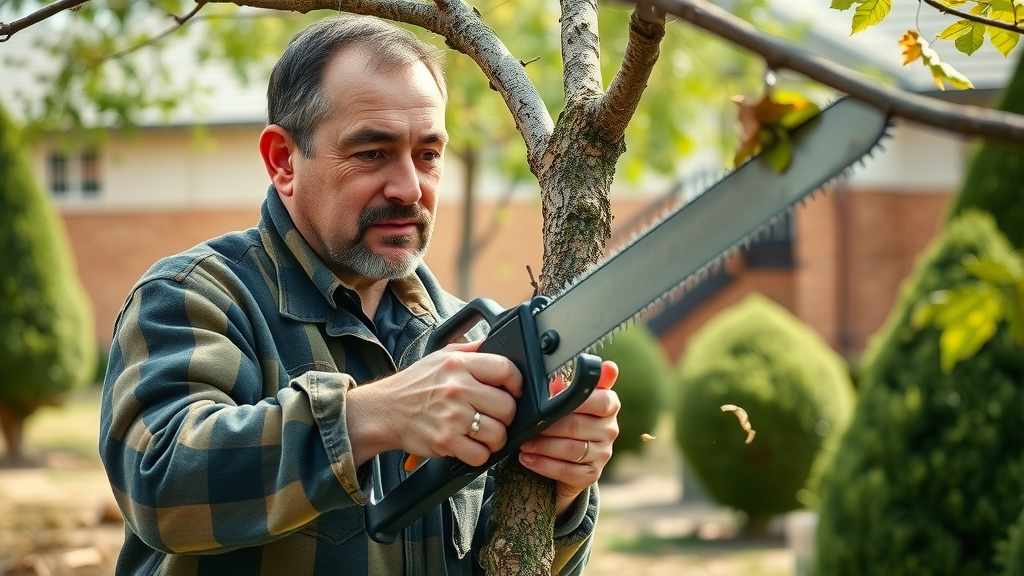
Effective trimming tree practices begin with observation. Always examine the tree for irregularities, overgrowth, and hazards before making the first cut. Using sanitized, sharp pruning saws and shears, work your way methodically around the tree, prioritizing dead, broken, or diseased branches. Cutting too close to the trunk or leaving ragged edges can harm the tree’s ability to heal, so always trim at the branch collar—a swollen area where the branch meets the trunk or parent limb.
Certified arborists stress the importance of pace: never remove more than 25% of a tree’s canopy in a single season to maintain safe, sustainable growth. Overzealous trimming and tree pruning risk exposing your trees to stress and decline, especially in large trees often found in residential landscapes. After cutting, collect all debris to reduce the risk of fungal infection or pest invasion in your yard. Adhering to these tree care principles preserves the health of the tree while ensuring the safety and beauty of your property for years to come.
Certified Arborists' Tips for Tree Trimming and Tree Care
Arborists bring both science and artistry to pruning and trimming. Their top advice for homeowners and businesses is to focus on regular inspections, understanding the unique needs of each species, and avoiding common mistakes such as topping or excessive limb removal. For complex undertakings—like trimming trees near buildings, roads, or power lines—always leave the job to certified arborists, who carry specialized training in safe procedures and landscape maintenance.
Investing in professional advice or service can prevent costly mishaps and protect the safety of your family, neighbors, and property investments. A certified arborist can spot hidden issues, recommend corrective action, and share tailored tips for fostering vibrant growth and minimizing risks. These experts use proven techniques, such as directional pruning, wound care, and species-specific maintenance schedules.
"The right cut in the right place can help your tree live decades longer and flourish with vibrant growth." – Local Arborist, Atlanta, GA
Safety Precautions: Dealing with Power Lines During Tree Trimming
Why Power Line Proximity Requires Specialized Tree Care
Trimming trees near power lines is among the most hazardous landscape maintenance activities. Tree branches can conduct electricity, and accidental contact with high voltage lines can lead to severe injury or power outages. Utility companies in North America report that poorly managed tree care is a leading cause of outages during storms. Always maintain safe distances and use proper barriers or warnings to prevent accidental contact with overhead lines.
In fact, certified arborists who specialize in “line clearance” work undergo additional training to address these challenges. They use insulated tools, aerial lifts, and adhere to strict safety protocols to protect themselves, bystanders, and infrastructure. If your tree branches grow close to utility lines, never attempt trimming yourself—instead, consult your local authorities or utility provider, who may offer reliable service or referrals for specialized crews.
Safety isn’t just about equipment—it’s about awareness, legal compliance, and respect for the dangerous forces involved with high voltage power lines. For all tree care near these hazards, professional intervention is not optional.
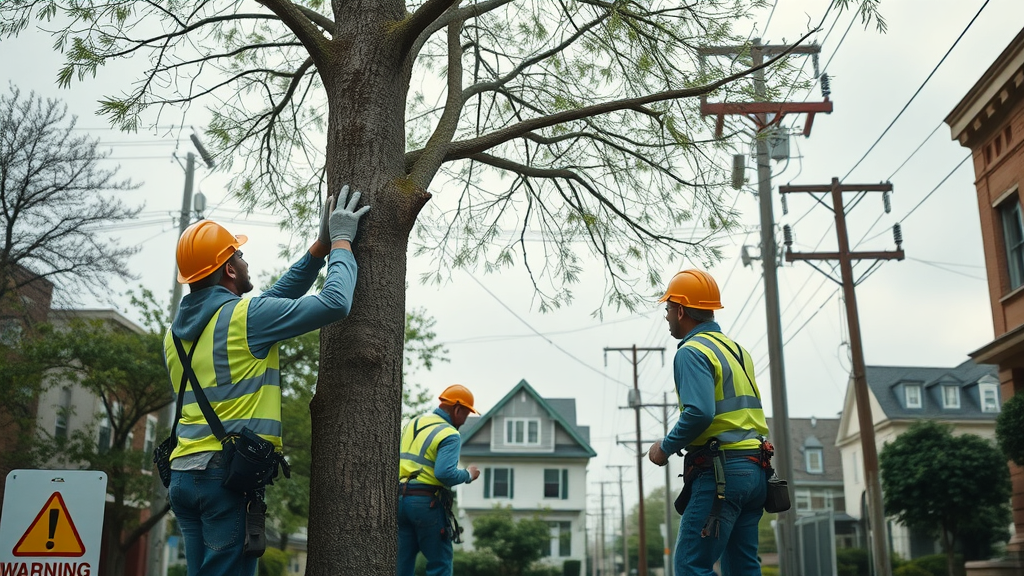
Legal and Safety Requirements for Tree Trimming Near Power Lines
The law is clear: only trained, certified professionals should undertake trimming and tree pruning within proximity to power lines. Many jurisdictions in North America enforce regulations requiring minimum clearance zones between overhead power lines and any trimming activities. Violating these safety codes can result in fines, liability for damages, or even loss of life. Always check local ordinances before planning any landscape maintenance near utility infrastructure.
Beyond the legalities, certified arborists follow industry standards, such as the ANSI Z133 guidelines, which mandate specific procedures for electrical hazard management. This ensures both the health of the tree and the safety of the surrounding area. If you’re unsure about regulations or the risks involved, contact your municipality or power company for guidance. When it comes to tree care near power lines, err on the side of caution and professionalism for everyone’s protection.
Property owners should also inform neighbors and secure the work area before trimming trees in urban neighborhoods to prevent accidental injury or property damage. Proactive communication and compliance form the bedrock of reliable, legal landscape maintenance.
Tree Trimming Costs: What to Expect and Budget For
| Tree Size | Average Cost |
|---|---|
| Small | $75–$400 |
| Medium | $150–$800 |
| Large | $300–$2,000 |
Tree trimming costs vary depending on factors such as tree size, access difficulty, proximity to power lines or buildings, and the scope of work involved. Small ornamental trees and shrubs typically fall at the lower end, while large trees requiring specialized equipment can reach the upper price limits. Urban areas with greater regulations or hazards (like power lines) may also command higher fees for certified arborist services.
When budgeting for landscape maintenance, factor in not just the trimming itself, but debris removal, disposal, and potential stump grinding if necessary. Always request a detailed estimate—reputable companies should inspect the site and provide a written breakdown. Investing in proper tree care today can save thousands in property repairs, energy costs, and risk mitigation down the road.
Frequently Asked Questions about Tree Trimming
How much should it cost to trim a tree?
Tree trimming costs vary widely based on tree size, location, and complexity, but for most residential trees in North America, homeowners can expect to spend between $150 and $2,000 per tree. Factors like proximity to power lines or difficult access can increase costs.
What month is best to trim trees?
Late winter to early spring is considered the best time for tree trimming as trees are dormant, making it easier to shape the canopy while minimizing stress and disease risk.
What's the difference between pruning and trimming?
Tree trimming typically refers to cutting back overgrown branches for shape and aesthetics, while pruning is the selective removal of diseased, dead, or damaged limbs specifically to promote better plant health.
What is the GA law regarding trees overhanging?
Georgia law generally allows property owners to trim limbs and branches extending onto their property from a neighbor’s tree, but it does not permit trespassing or damaging the health of the tree beyond the property line.
Best Practices for Ongoing Tree Care and Trimming in North America
- Inspect trees routinely for overgrowth or disease
- Only prune trees during recommended seasons
- Hire certified arborists for complex or hazardous jobs
- Follow local regulations for power lines and property boundaries
Video: Step-by-Step Visual Guide to Tree Trimming
Video: Safety Around Power Lines During Tree Trimming
Key Takeaways for Tree Trimming and Plant Health
- Proper tree trimming enhances vibrant growth and safety
- Knowing when and how to prune trees prevents damage
- Certified arborists provide expertise and assurance
- Always prioritize safety and regulatory compliance
Ready to Revitalize Your Landscape? Begin Effective Tree Trimming Today
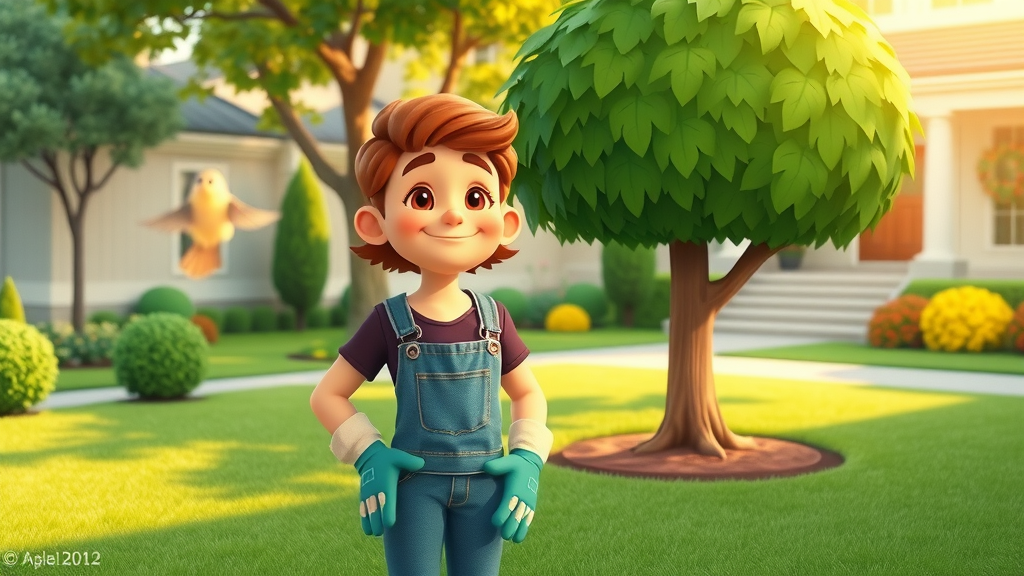
Take action now: Assess your trees, schedule a consultation with certified arborists, and develop a year-round tree care routine that supports vibrant, safe, and resilient growth for years to come!
If you’re looking to take your landscape management to the next level, understanding the full scope of professional services and budgeting is essential. Discover how to plan for every aspect of tree care, from routine maintenance to emergency interventions, by exploring this comprehensive guide on budgeting for professional tree services . Gaining insight into costs and service options will empower you to make informed decisions that protect your property and ensure your trees thrive for years ahead.
Regular tree trimming is essential for maintaining the health, safety, and aesthetics of your landscape. By removing dead or diseased branches, you can prevent the spread of decay and promote robust growth. Additionally, trimming enhances sunlight penetration and air circulation, benefiting both the tree and surrounding plants. For a comprehensive understanding of these advantages, consider reading 6 Tree Pruning and Trimming Benefits .
Moreover, consistent pruning can mitigate potential hazards by eliminating weak limbs that might fall during storms, thereby protecting your property and loved ones. It also contributes to the overall visual appeal of your yard, potentially increasing property value. To delve deeper into these benefits, explore Top 10 Benefits of Tree Trimming .
If you’re committed to fostering a vibrant and safe outdoor environment, these resources will provide you with valuable insights into effective tree care practices.
 Add Row
Add Row  Add
Add 


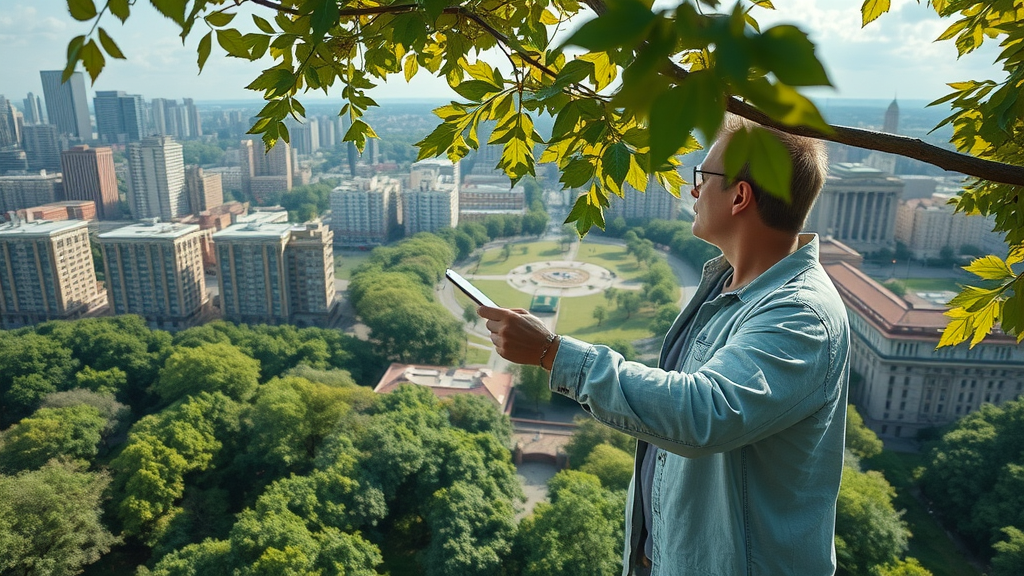

Write A Comment